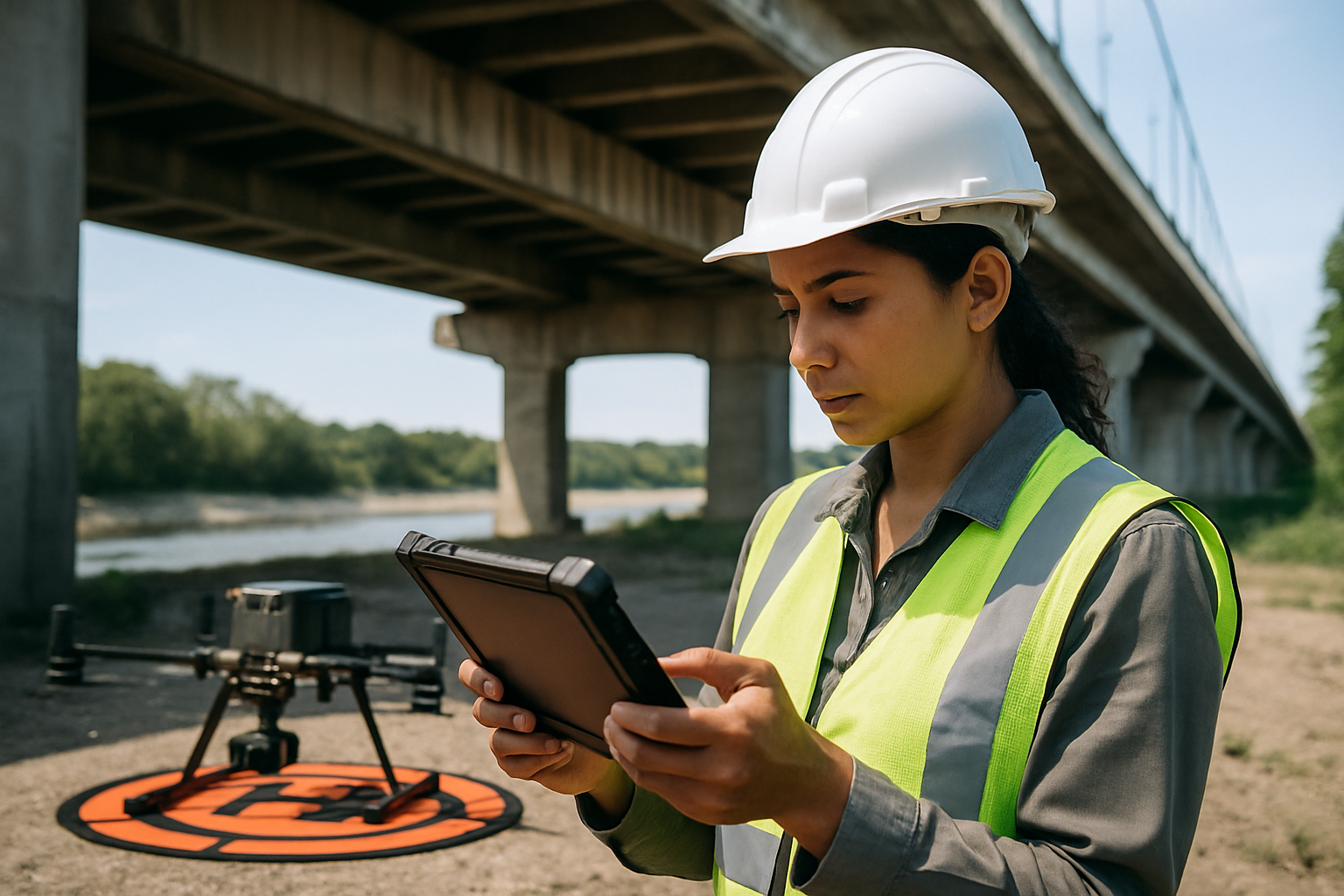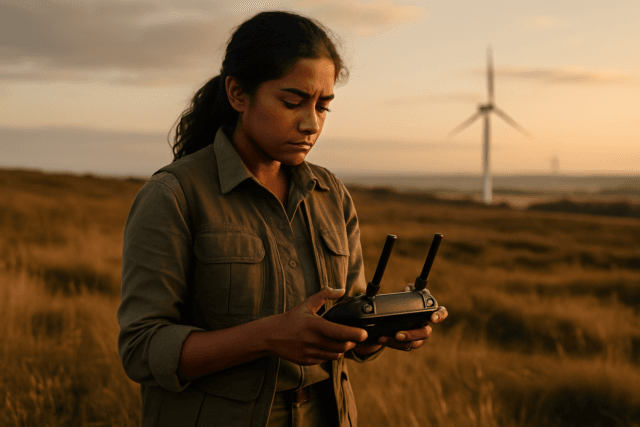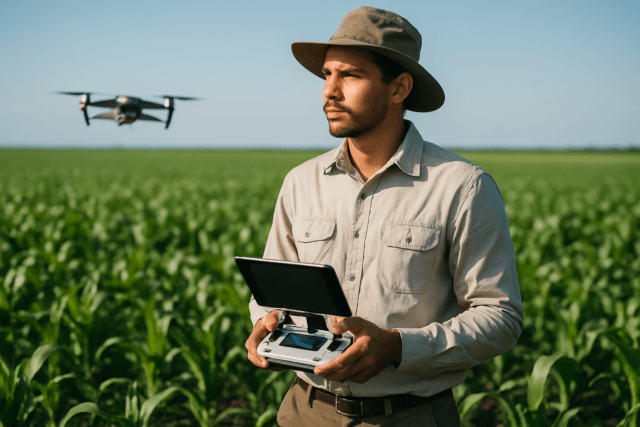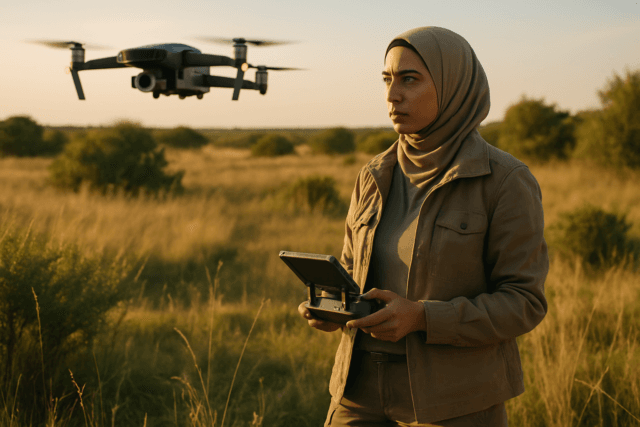The hum of a drone replacing the rumble of a “snooper” truck or the precarious perch of an inspector suspended from ropes—it’s a vision rapidly becoming a reality in bridge infrastructure management across the United States. Unmanned Aerial Systems (UAS), or drones, offer a safer, more efficient, and often more cost-effective method for inspecting vital infrastructure. Yet, harnessing this technology for bridge inspection isn’t as simple as launching a drone; it requires navigating a specific set of federal and, at times, state-level regulations to ensure safe and compliant operations.
The Federal Aviation Administration (FAA) and Part 107
At the core of drone operations in the US, including those for bridge inspections, are the regulations set forth by the Federal Aviation Administration (FAA). For commercial drone pilots, which includes anyone conducting bridge inspections for business purposes, compliance with 14 CFR Part 107, Small Unmanned Aircraft Systems (sUAS) Rule, is paramount.
Remote Pilot Certificate
A fundamental requirement is that the drone operator must hold a Remote Pilot Certificate with a Small UAS Rating, often referred to as a Part 107 license. This certification ensures that pilots understand the necessary safety protocols and operational guidelines. Drones weighing over 0.55 pounds must also be registered with the FAA.
Key Operational Limitations under Part 107
Part 107 outlines several critical operational limitations that directly impact bridge inspection missions:
- Visual Line of Sight (VLOS): Operators are required to maintain visual line of sight with their drone at all times. This can be a significant limitation when inspecting large bridges or areas beneath the bridge deck, potentially necessitating waivers or the use of visual observers.
- Altitude Restrictions: Drones generally may not exceed an altitude of 400 feet above ground level to reduce the risk of collisions with manned aircraft. When flying near structures, the drone can fly up to 400 feet above the tallest point of the structure within a 400-foot radius.
- Controlled Airspace Restrictions: Flying in controlled airspace, such as near airports, requires special permission or waivers from the FAA. Operators must file for such waivers through the FAA.
- Operations Over People: Generally, drones are prohibited from flying over people who are not directly participating in the operation or who are not under a covered structure or inside a stationary vehicle.
- Daylight Operations: Part 107 initially restricted operations to daylight hours or civil twilight with anti-collision lighting. However, recent updates have provided more flexibility for night operations under certain conditions.
Waivers for Advanced Operations
Recognizing the practical limitations of some Part 107 rules for complex industrial inspections, the FAA allows operators to apply for waivers. One significant waiver for bridge inspection is for Beyond Visual Line of Sight (BVLOS) operations. For example, the North Carolina DOT secured a waiver to fly drones BVLOS for bridge inspections, with stipulations that the drone remains within 40 feet of the bridge structure itself and within 1500 feet of the remote pilot. Obtaining BVLOS waivers has historically been complex, often requiring expensive radar equipment or multiple visual observers, though new approaches are emerging.
National Bridge Inspection Standards (NBIS) and FHWA Guidance
Beyond FAA regulations, the inspection of bridges falls under the purview of the Federal Highway Administration (FHWA), specifically through the National Bridge Inspection Standards (NBIS). These standards define the regulations for inspecting all publicly owned bridges.
Integration of Drones into NBIS
The NBIS were updated to include the use of unmanned aircraft systems. While the initial rules addressing drones in the NBIS were somewhat ambiguous, the FHWA continues to research and integrate these tools where they contribute to the success of the bridge inspection program. It’s important to note that while drones are a powerful tool, they are not currently acceptable as a complete replacement for hands-on inspections, especially for critical elements requiring a physical touch. However, they can significantly assist by providing initial images of difficult-to-access areas and supplementing data collected by human inspectors.
Role of State Departments of Transportation (DOTs)
State DOTs play a crucial role in implementing and often further refining bridge inspection guidelines. Many states have incorporated UAS into their regular inspection activities and sponsored research into their use. While FAA Part 107 provides the overarching aviation rules, individual states and local authorities may have additional restrictions specific to their infrastructure and airspace. For instance, certain high-traffic or historic bridges might have unique regulations. State DOTs often have specific protocols for data collection, reporting, and how drone-acquired data integrates into their existing bridge management systems.
Challenges and Considerations for Drone Bridge Inspections
Despite the clear advantages, several challenges and considerations remain for drone-based bridge inspections:
Maintaining GPS Signal and Obstacle Avoidance
Flying under or within the intricate structures of bridges can lead to the loss of GPS signals, which is critical for the navigation of many drones. Newer drone technologies with advanced obstacle avoidance systems and visual navigation capabilities are addressing these issues, allowing for safer operations in GPS-denied environments and close proximity to structures.
Data Management and Analysis
Drones collect vast amounts of high-resolution imagery, video, and other sensor data (e.g., LiDAR, thermal). Managing, processing, and analyzing this data effectively is crucial for identifying defects and tracking structural changes over time. AI-driven analysis is emerging to automate defect detection and leverage deep learning for predictive analytics.
Weather Dependency
Drone operations are susceptible to weather conditions, with high winds or rain significantly interfering with safe and effective flight.
Training and Expertise
While drones can make inspections safer, skilled pilots and engineers are still needed to operate the drones effectively and accurately analyze the collected data. Bridge inspectors with a technical understanding of bridge structures are ideal candidates to become remote pilots.
Privacy and Property Rights
Drone operators must respect the privacy of individuals and property owners near inspection sites, and obtaining permissions for flights over private property is often advisable.
The Future of Drone Bridge Inspections
The use of drones in bridge inspection is rapidly evolving. As technology advances, including improved sensors, longer battery life, and more autonomous capabilities, drones will become even more integral to infrastructure management. The integration of AI for data analysis and the development of fully automated UAVs promise faster, more accurate, and even more cost-effective inspections, ensuring the safety and longevity of the nation’s bridge infrastructure.





